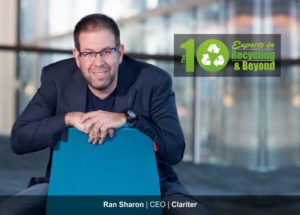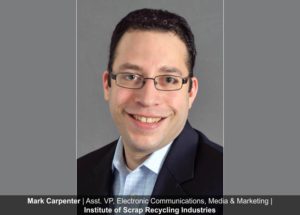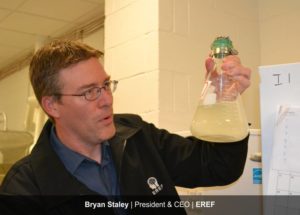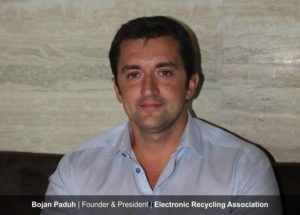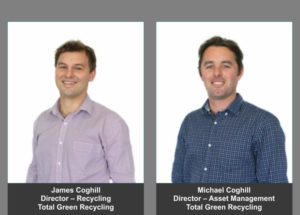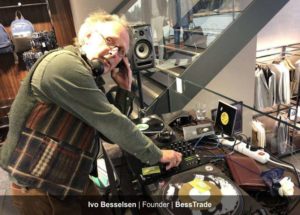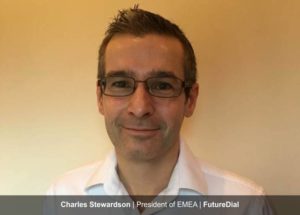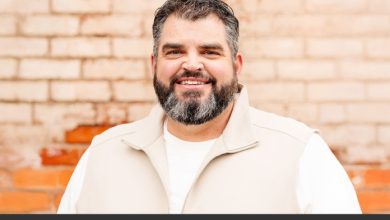John Shegerian: An Innovator Focused on Positive Change
The 10 Experts in Recycling and Beyond
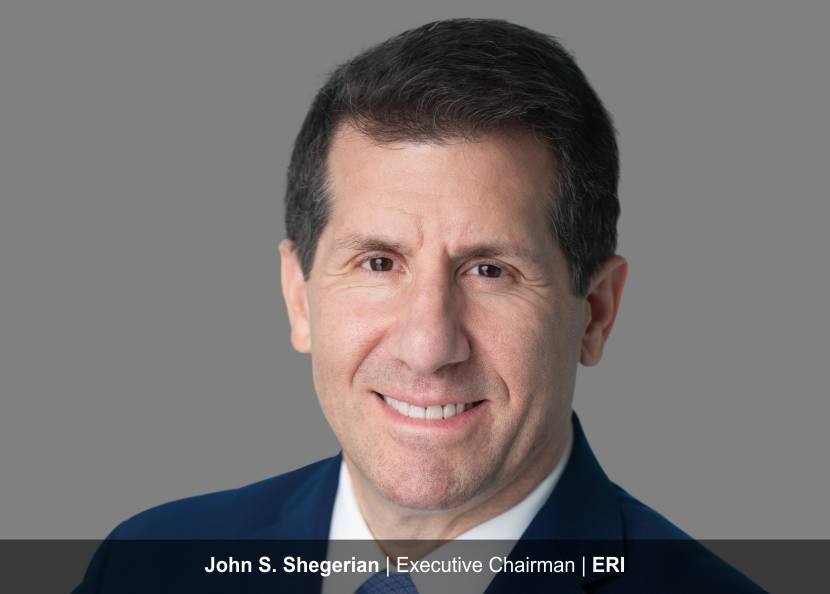
The emergence of newer, smaller, faster, and more affordable devices has given our society tremendous amounts of benefits. However, the other side of the coin is that this explosive growth of the electronics industry has also led to the rapidly escalating issue of end-of-life (EOL) electronics or e-waste.
In many landfill operations, toxic materials can be released from old electronic devices into the environment. With the glut of e-waste continuing its rapid growth, the need for effective electronics recycling programs has also increased. A new report from World Economic Forum has stated that e-waste is now the fastest-growing waste stream in the world, with an estimated total of 48.5 million tons in 2018.
There are three unstoppable business and societal trends that are causing, and will continue to create, spiking numbers in electronics turnover: the desire for sustainability and an adherence to circular economy principles; the need for cybersecurity and responsible hardware data destruction; and the impending 4G to 5G switchover (potentially the greatest device-turnover sparking event since analog was switched out to digital). These factors simply mean that the tsunami of e-waste has no end in sight.
Fortunately, serial entrepreneur John Shegerian and his team figured that if they could solve this problem, the world would beat a path to their doors, and therefore founded ERI in 2002. Fast forward to today, and ERI is on a mission to protect people, the planet and everyone’s privacy. ERI has become the largest fully integrated IT and electronics asset disposition provider and cybersecurity-focused hardware destruction company in the United States, and possibly the world. ERI’s unique blend of “green DNA” and cybersecurity focus allows the company to succeed in its environmental and data based missions. Although there are thousands of companies in the United States that do some aspect of electronics recycling, ERI has the capability to recycle more than a billion pounds of e-waste per year.
The beginning
In 2002, Aaron Blum launched a small electronics recycling company. After two years, he turned to a friend for advice. Having just sold FinancialAid.com, entrepreneur John Shegerian loved the idea of recycling electronics, but he agreed with Blum that they needed to find a way to make it a more profitable venture. The first step John took was bringing his wife, Tammy, and business colleague Kevin J. Dillon into the fold. The four of them would become the founders of ERI. The four entrepreneurs moved the company to Fresno, where they could utilize produce trucks that were returning empty to area farms. Having empty trucks return filled with recycled electronics saved everyone money. They also got out of the innovation gate early – setting new standards for a growing industry, creating proprietary software tracking for electric components, installing overhead cameras, and making their facilities greener with electric forklifts and recycled furniture. From tits humble beginning, ERI’s culture has been to do everything only the right way. Within three short years, ERI’s business was thriving.
Protecting organizations, people and the environment
The founders saw the benefit to expanding to different areas in the U.S. Massachusetts became home to the second ERI facility in 2007. In 2008, four more facilities opened in Colorado, Indiana, Texas, and Washington. Another change took place that same year. While ERI at the time was focusing on end-of-life electronics recycling, the facilities added IT asset disposition (ITAD) to its services. This would help businesses recover asset value from obsolete electronics, and help provide a second life for many of these working devices.
ERI recycles everything from phones and televisions to computers and printers. If it is an electronic device, the workers at ERI’s facilities will break it down into the different components and commodities and send them to smelters who will create a new life out of these old commodities.
Perhaps most importantly, ERI is the only recycler of electronics on the planet to be certified at the highest level by all leading environmental and data security oversight organizations to de-manufacture, recycle, and refurbish every type of electronic device in an environmentally responsible manner. On the sustainability side, ERI was the first recycler to be dual certified by both R2 and as a Basel Action Network e-steward. On the digital destruction side, ERI has achieved the highest rating from NAID at all eight of its facilities.
Being the largest fully integrated IT and Electronics Asset Disposition Provider
With the addition of ITAD in 2008, ERI had to balance growth with cost-effectiveness. Commercial electronics shredders had a mix of pros and cons. ERI designed and created its own proprietary shredders, which ended up being the largest and most efficient e-waste shredders in the world to this day.
Unique and innovative partnerships were equally important to the company’s success. One of the first was with the major retailer Best Buy. With the help of ERI, Best Buy launched its “Take Back” program. Staples is another long-time partner. With ERI’s help, Staples is able to recycle electronics for its business customers. Two more partners came onboard, Alcoa and LS-Nikko Copper, and both invested in ERI and took spots on the board of directors.
Making the world a better place
Currently, John Shegerian serves as the co-founder and Executive Chairman of ERI. To be a successful businessperson, regardless of the industry, was always his goal. But more than that, John wanted to inspire positive change within any industry his companies are a part of.
“As for aiming to be where I am right now, it was not something I had predicted. You never know exactly where you are going to end up — and if you don’t keep evolving, you are not moving forward,” John asserts. He wanted to make a good living while making the world a better place.
No stranger to “recycling lives” and serving up second chances, in 1993, John co-founded Homeboy Tortillas and Homeboy Industries, which continues to serve as a paradigm for urban renewal in America and was awarded the New York Stock Exchange Building for the Future Award for creating new jobs and opportunities for gang-impacted youth in post-riot Los Angeles. He is also the creator of the popular Bulldog Root Beer brand, which he launched in 1997. John then co-founded FinancialAid.com, filling the financial aid gap for higher education and generating one of the most successful student loan companies in the country. While at FinancialAid.com, he also created RateYourCampus.com (a college student polling and feedback community), leading to the creation of CampusDirt.com (which evolved into the most relevant and visited college search engine of its time). Also, CampusClix.com was created and became one of the first college social networking properties on the web.
The entrepreneurial journey continued…
In October 2004, John and his partners sold FinancialAid.com and all the aforementioned affiliated properties to Education Lending Group, which was purchased in February 2005 by CIT (NYSE: CIT). He founded Addicted.com in 2005, one of the largest web resources for individuals seeking help for addictions online. The website boasts a database of over 20,000 addiction centers across the United States. John is also the co-founder and CMO of The Marketing Masters, a digital marketing and web development company that builds effective, ROI-driven marketing campaigns for businesses large and small. John co-founded Som Sleep, a drink formulated to help individuals achieve better, more restorative sleep. John is a member of the University of Pennsylvania Wharton School of Business’ Initiative for Global Environmental Leadership (IGEL) Advisory Board and was named the Clean Tech Entrepreneur of the Year for Northern California by Ernst & Young.
A glorious ride
For John, it has been a glorious ride with a fair share of good as well as challenging moments.
“The best part of my journey so far has been having the privilege to consistently introduce brands that fill a void in the marketplace, make a profit, are scalable, and also have a social impact that is ever-lasting. The toughest part is making mistakes that end up costing both time and resources. That may be tough, but it’s also important because you don’t learn unless you come to terms with that needed part of the journey. You have to make those mistakes and own them to really navigate the journey in the best way possible,” John recalls.
When asked whether he has achieved all that he desired, he firmly says, “No! There are no finish lines in life as a serial entrepreneur! There are always new challenges on the road ahead to keep things interesting and help us to become better problem solvers and innovators.”
John also believes that when creating new brands or industries, it is never an easy task convincing others that you are on the right path. So learning to ignore the naysayers while you shift the paradigm and change the world is the best way to enjoy the journey and never look back! According to him, there are several characteristics that are key to being a successful business leader. Commitment to innovation is a big one.
“Resilience, energy, and the ability to not give up when there seems to be no light at the end of the tunnel are also big ones. As for imparting good characteristics on colleagues, employees and my children, I always say that if you walk the walk and not just talk the talk, others will follow,” John adds.
Transparency at the core of ERI
Talking about transparency at ERI, John says, “We strive to exhibit the most radical transparency of any recycling company in the world. We host over 100 in-person audits a year at our facilities by our clients and certifying bodies. And our downstream is the most collapsed and transparent that has ever been achieved in our industry because two of our minority strategic investors (LS-Nikko Copper and Alcoa) take much of our shredded commodities for beneficial reuse. This allows us to be right in middle of the Circular Economy while transparently accounting where all our commodities go.”
Led by John, ERI has also developed its own online asset tracking system, MyTrackTech, which enables its clients to track the entire lifecycle of each devices, from initial shipment down to the individual part, unit, and commodity levels. MyTrackTech is the customer-facing component of TrackTech, ERI’s internal asset tracking system.
What’s next?
The sky is truly the limit for ERI – a company that refuses to rest on its laurels after setting industry standards in sustainability, data destruction and innovation. Expect more problems solved and new innovations pioneered in the coming months and years for this company that is dedicated to protecting organizations, people and the environment…one electronic device at a time.
“We aim to stay focused on growing ERI and double our size in the next three years or less. Also, to establish a larger global footprint and continue to lead our industry with the introduction of further innovations,” John concludes.





